Catherine Kase Leads USA Safety Plea For Change In Tokyo 2020 Swim Marathon Venue
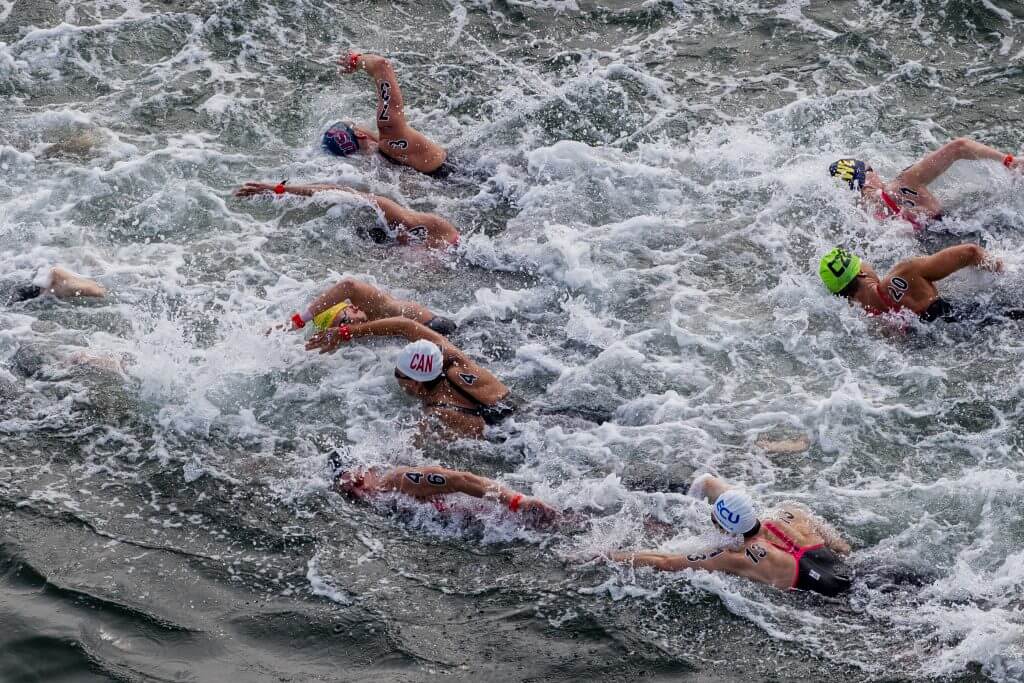
Editorial content for the 2021 Tokyo Olympic Games coverage is sponsored by GMX7.
See full event coverage. Follow GMX7 on Instagram at @GMX7training #gmx7

USA Safety Plea For Change In Tokyo 2020 Swim Marathon Venue
Catherine Kase, head coach to the USA Olympic Open Water Team, and the American Swimming Coaches Association (ASCA) of which she is a member, have joined the chorus of key stakeholders calling for the 2020 Olympic swim marathon venue to be moved from Tokyo to safer waters.
Kase and John Leonard, the director of ASCA, have both called on Tokyo organisers, the International Olympic Committee (IOC) and FINA, the international swimming federation, to put in place a “Plan B” and be open to switching venues in the interest of athlete safety.
So far, FINA and local organisers have been adamant: there is no “B Plan”.
The IOC has already moved the running marathons and race walks out of the Japanese capital north to Hokkaido to avoid the risks associated with the stifling heat and humidity expected during the Tokyo Olympic Games next July.
Swimmers and coaches have argued for a similar shift in open water but to date their appeals have not shifted the view of IOC members and the key FINA decision-makers who want the open water event to remain in Tokyo and maintain that adequate safety arrangements are in place.
When the Associated Press took up the story of concern in the swimming community raised by Swimming World, Kase wrote a note to the news agency that nailed the issued to the tragedy of Fran Crippen:
“Here’s the reality. If a marathoner faints or passes out, they may get a few bumps and bruises. If the same thing happens to an open-water swimmer, the result could be lethal.”
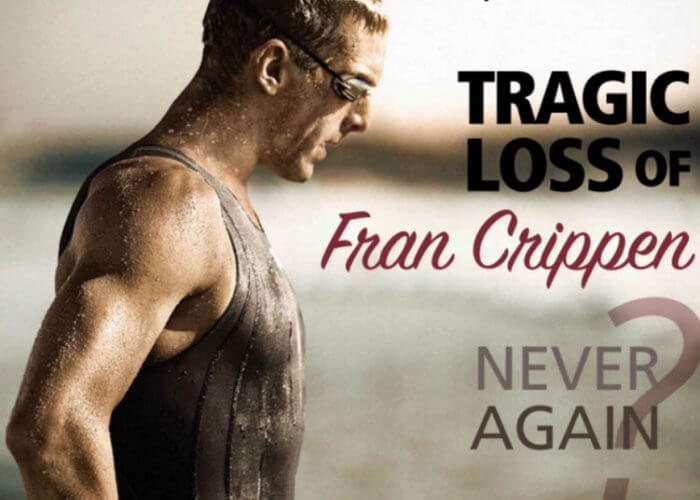
Fran Crippen – Never Again … a 2015 Swimming World cover … and since then, races under FINA rules have been held in waters over the 31C limit – Photo Courtesy: Swimming World Magazine
Fran Crippen lost his life in a FINA World Cup race off the coast of the United Arab Emirates in October 2010. Several swimmers ended up in hospital as a result of extreme heat of more than 40C in the air and more than 33C in the water that day in waters off Fujairah, where FINA had move the race to at the eleventh hour and more than 100 km from the intended venue on an opposite coast.
No-one noticed that Fran Crippen had passed out and slipped out of view, his body found two hours after the end of the race beyond a search sparked by Fran’s teammates. They, not organisers, had noticed the swimmer was missing. Two inquiries highlighted serious flaws in safety and organisational arrangements, FINA and the local organisers singled out for criticism.
The autopsy on Fran Crippen concluded his death was from drowning and heat exhaustion, while one expert pointed to dangers specific to swimming: in certain air and water temperature-related conditions, the swimmer’s body can no longer sweat, can no longer compensate for overheating.
His was the first death in FINA competition.
Kase, nee Vogt, tells AP that she and many in the sport are “not comfortable” with the Tokyo venue and suggests a Plan B is critical:
“For all open-water swims alternative plans should be made in case environmental factors make the swim unsafe forcing it to be canceled or curtailed. We would like to push for a viable back-up plan. The straightforward answer is that we are not comfortable with the Odaiba venue.”
Leonard weighed in with:
“We support a change in venue. The ASCA position is always to err on the side of safety for the athletes. FINA talks about safety and then does the opposite and puts athletes in harm’s way.”
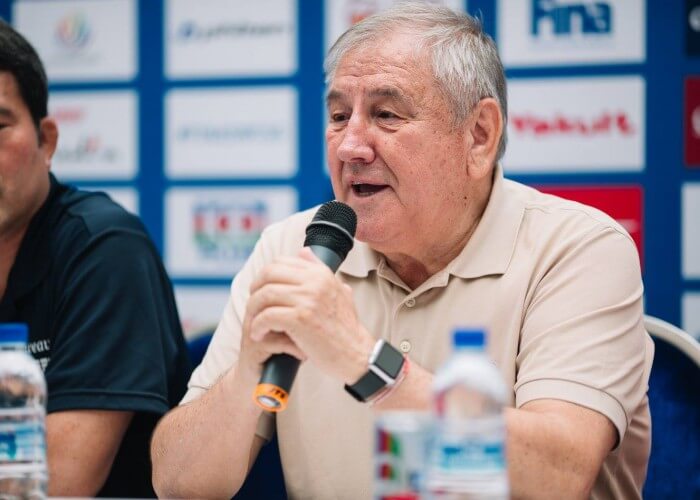
Cornel Marculescu, FINA director – Photo Courtesy: Singapore Swimming Association
When AP put that to Cornel Marculescu, the executive director of FINA, he “spoke cautiously” in response, AP noted in a report that included the following:
Asked about the water temperatures at the venue, Marculescu replied: “I don’t want to comment,” he said, and suggested that elaborating could cause “problems.”
“This is what it is,” he added. “We check the quality of the water, we check the temperature all the time.”
Marculescu and local organizers say race times could to be moved up to very early in the morning, hoping to beat the heat. That was also an early strategy for the marathons and race walks before they were moved.
Athletes in outdoor water events at the 2016 Rio de Janeiro Olympics faced severe pollution in venues for rowing, sailing, canoeing, open-water swimming, and triathlon. But heat was not an issue.
“We are following up with a company there (in Japan),” Marculescu said, “like we have done in Rio — the same story — with an official government company. We are looking at water temperatures, the quality of the water and all these kinds of things.”
Have The Lessons Delivered By Fran Crippen’s Death Been Learned?
Canada also withdrew from that event.
In the wake of inquiry, FINA imposed a 31C upper limit on open water temperatures. Many in swimming welcome such controls but believe that the level is still too high. In pool racing, 28C is the upper limit – for swimmers who race 50m often in environments where the ‘room’ temperature is also controlled. The marathon is 10km and athletes are exposed to the elements, including hot sun, spray and specific conditions pertinent to surface waters.
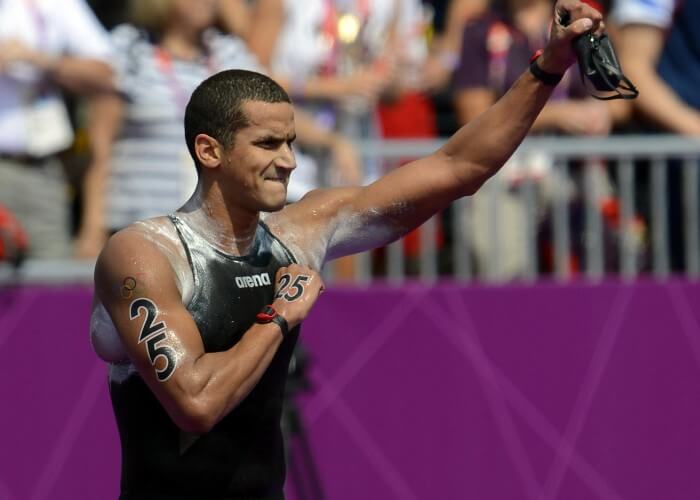
Oussama Mellouli set for London 2012 action – Photo Courtesy: Andrew P. Scott-USA TODAY
The marathon venue in Tokyo Bay, the “Odaiba Marine Park”, hit the headlines in the past two years as water temperatures during Olympic test events reached danger levels. Olympic Marathon champion of 2012, Oussama Mellouli, emerged from one test event to tell the Japan Times:
“That was the warmest race I’ve ever done. It felt good for the first 2 km then I got super overheated.”
The event started at 7 a.m. with the air temperature already over 30C in the Japanese capital. “The water temperature was high so I’m a bit concerned about that,” said Yumi Kida, who said she guzzled iced water before the race in an effort to reduce her body heat.
Those events unfold against a backdrop of deep concern in swimming that FINA has allowed open water races held under its rules – and in circumstances where FINA officials are present and part of the team monitoring safety – to proceed even when water temperatures have exceeded the upper limit of 31C.
Teams from the USA, Canada and Japan have withdrawn from international competition over safety concerns and in circumstances where water temperatures measured at 4am do not reflect the actual conditions in which swimmers raced hours later.
The waters off Tokyo also suffered from troubling E. coli measures said to be related to local sewage outlets. After one race, swimmers complained about foul odours from a waste inlet not far from the course.
Organisers have installed underwater screens that work as a filter and plan to use triple filters during the Games next year. Those screens, however, also appeared to drive up water temperatures.
In a statement, Tokyo2020 spokesman Masa Takaya said:
“We will consider operating methods that can help suppress water temperatures, such as allowing the underwater screens to float, and opening them when the weather is good.”
In response to talk of filters, Peter Crippen, Fran’s father, told Swimming World:
“I know enough about water chemistry to say it is absolutely ridiculous to say they are using screens to filter the water from E coli. The only thing that will kill e-coli is APO advanced oxygen potential, or UV: in open water, neither is possible. The source must be eliminated. No screen will do it! Frankly, these people are either liars or just plain stupid.”
On the ninth anniversary of her son’s death, Pat Crippen, Fran’s mother, appealed for sense and safety-first when she told Swimming World:
“I ask myself how would I answer a parent who asks me if I had the opportunity, would I ever allow one of my children to swim open water? No one has ever asked me that question. My heart says ‘yes’ because Fran loved it so but my good judgement says ‘no’ because FINA continues to sanction these events that clearly push and exceed the safe limit. Makes me think there are organizers out there who just don’t care.”
“And FINA – it confirms my belief that there was never a sincere resolve on their part to put swimmers safety over money. When I hear about these questionable races FINA sponsors, I feel like Fran’s death was merely bad PR and only temporarily in the way of their grand plan to follow the money.”
The Tokyo Venue
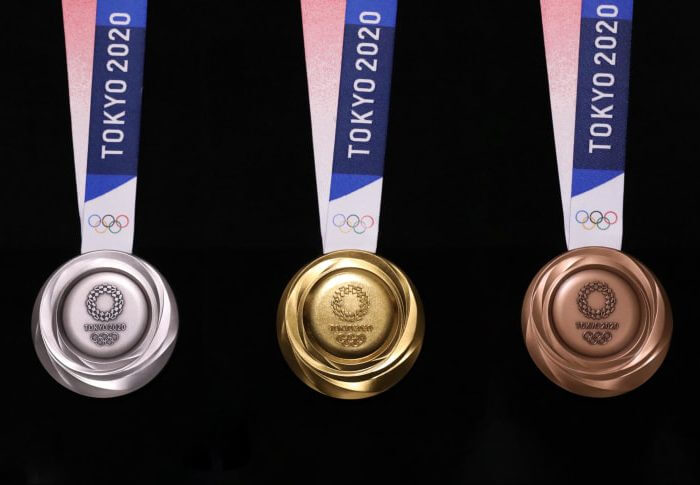
The prizes – Photo Courtesy: Tokyo 2020
This summer, average temperatures at the pertinent time of year in Tokyo Bay have been in the range of 29C-30C (84F-86F). Lawyer, safety advocate and 1984 Olympic 100m freestyle champion Nancy Hogshead-Makar considered that issue in the context of an Olympic 5km test event that proceeded in waters that tested the upper limit. Her conclusion was one that the average club swimmer around the world can relate to:
“I can’t even believe the limit is 87 degrees Fahrenheit! When we had to train in 85 degrees, we had to get out and take cold showers. My teammates’ faces were purple.”
The IOC promised last month there would be no more venue changes. It made the pledge after angering Tokyo Governor Yuriko Koike, who strongly opposed moving the marathons out of Tokyo to the norther city of Sapporo.
Ranged against the official position are athletes, coaches and national federations that never want to see swimmers met by ambulances.
Some beg to differ with the safety first message, however. In comments that fail to recognise that there are certain conditions a swimmer cannot prepare for – as highlighted by the Crippen Inquiry reports – and will surely anger the shoal of people who worked hard to make sure Fran Crippen was prepared for many conditions down the years, Fernando Possenti, the open-water coach for the Brazilian Olympic team, told AP that athletes need to ‘deal with the environment and not waste time complaining about it’. He told AP:
“Program yourself, adapt your athletes to this kind of condition. This particular sport contemplates direct contact with nature and its variables. Heat and humidity are two of them.”
AP notes another aspect in the ‘should we stay or should we go” debate on the Tokyo venue:
The Odaiba venue was picked partly because it offers picturesque 180-degree views of the skyscrapers that hug Tokyo Bay and the bridges that cross it.
Television has a powerful say in scheduling and venue location. About three-quarters of the IOC income is from broadcast rights. The American network NBC has agreed to pay $7.75 billion to broadcast the Summer and Winter Olympics from 2022 through 2032.




